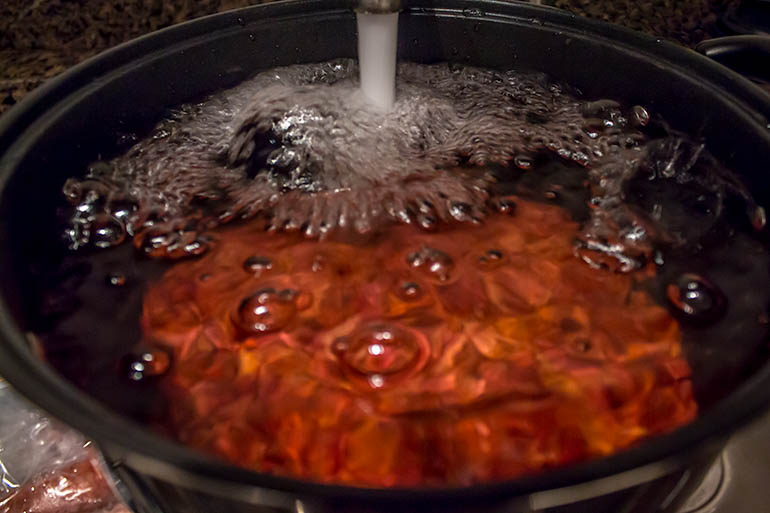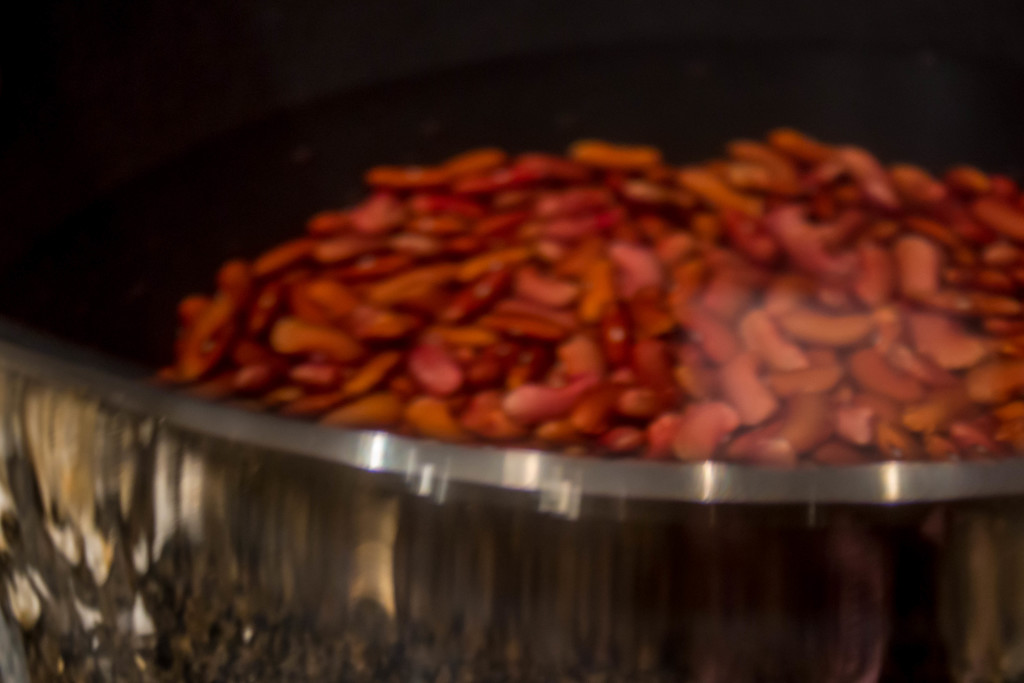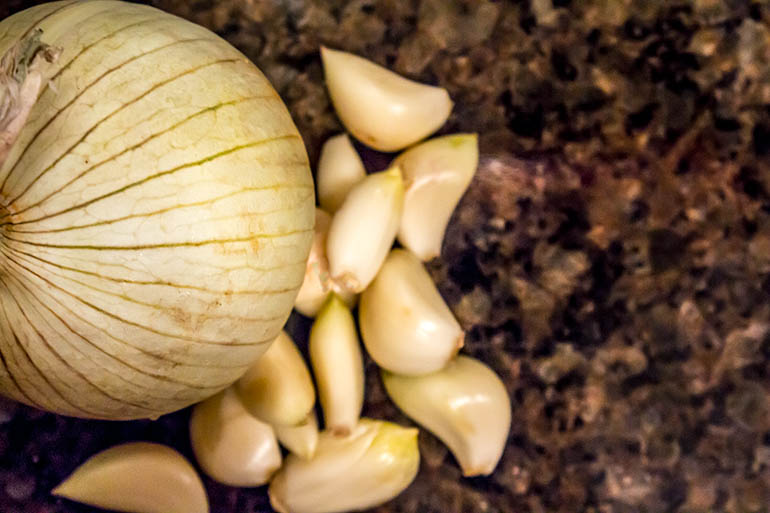Redbeans became a staple food during wartime to help with rationing. Citizens were encouraged to eat a vegetarian diet on “Meatless Mondays,” and the meat they didn’t use would be sent to those fighting in war. Even after war, red beans stuck around in New Orleans and the rest of Louisiana — if it’s not broken don’t fix it, right? That’s why learning to cook red beans is as important as learning to drive for New Orleanians. Here are three easy tips to make sure your pot of Camellia’s red beans, the most common brand, are on point.
Preparation

Photo by Vernell Dunams
Never skip out on washing the beans. Yes, they are packaged and yes, they are clean, but you never want to just put beans straight out of the pack into a pot of boiling water to cook. You have to inspect the beans and make sure there isn’t any bad beans in the bunch. To make sure all the beans are good, you have to do something that may sound like a silly wives’ tale, it works every time. Rinse the entire pack of beans off once and then submerge it in water for about half an hour to an hour. Any beans that float to the top should be thrown out because they just won’t play nicely with the others.
Waiting Period

Photo by Vernell Dunams
Once you’ve picked the good beans from the bad, you have to presoak them for a few hours. Don’t confuse this step with the initial washing, and please don’t skip this step out of impatience. Beans always take forever to absorb water and cook down, so if you give the beans time to absorb water early on, you’ll reduce the amount of hours you’re standing over a stove. If you don’t think you can wait, soak the beans the night before and the day of you’ll be ready to go.
Seasoning

Photo by Vernell Dunams
This is where the battle lines are drawn in families: the controversial question of dried powders vs fresh herbs. Your mom’s mom will say, “When I was a young girl, we only used the freshest ingredients,” and your mom will say “What kind of question is that? You’re not allowed to make red beans anymore.”
Let’s avoid the shame and face the fact: if you are about to cook something that probably will be on the stove for 5 to 6 hours, you cannot substitute fresh herbs and spices for dried ones. If you do this, you’ll make an extremely bland pot of red beans, and you will be disowned. You can, however, use both. While your beans are boiling away add all the fresh herbs and later down the road sprinkle in some bottled spices.




